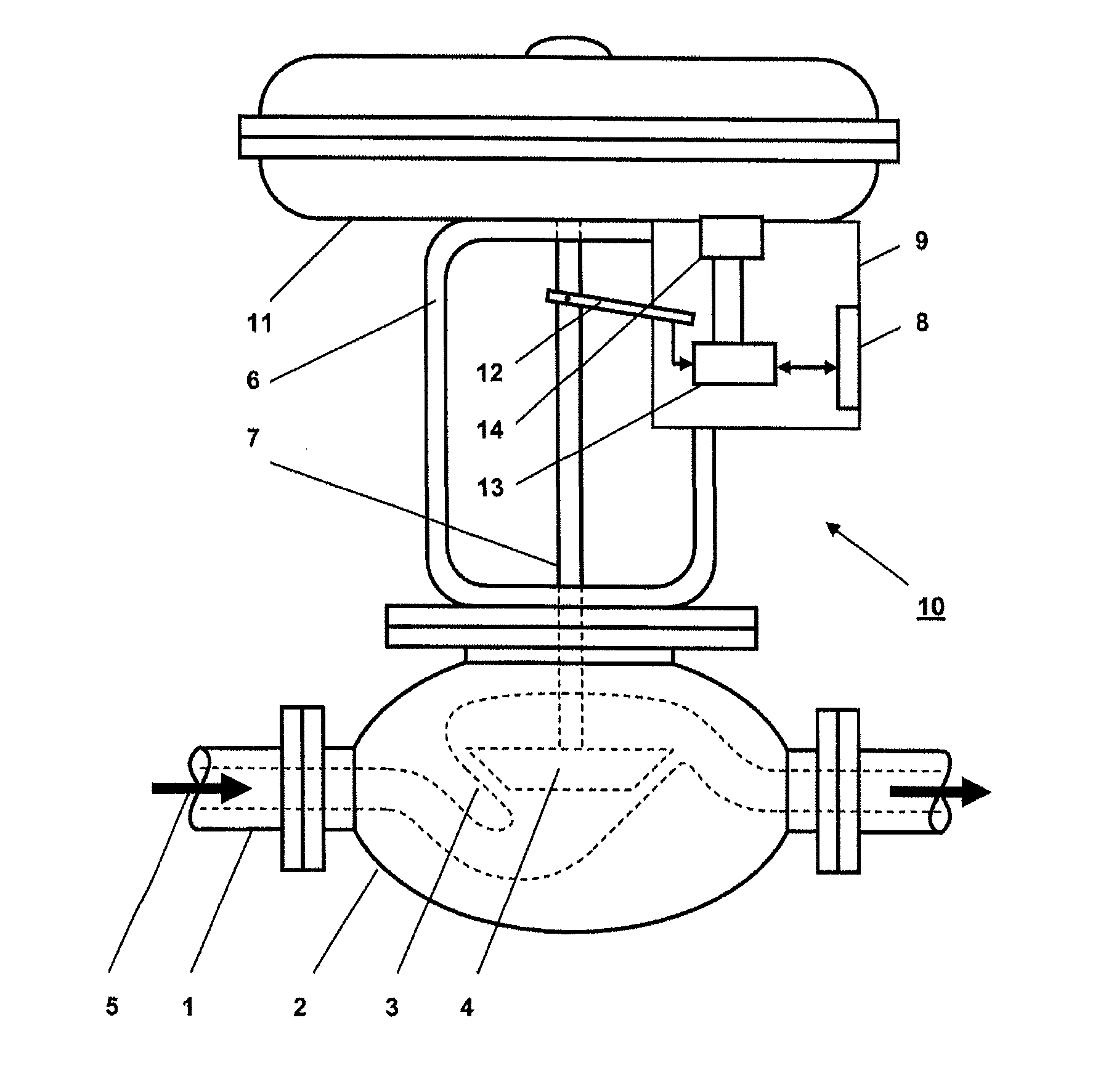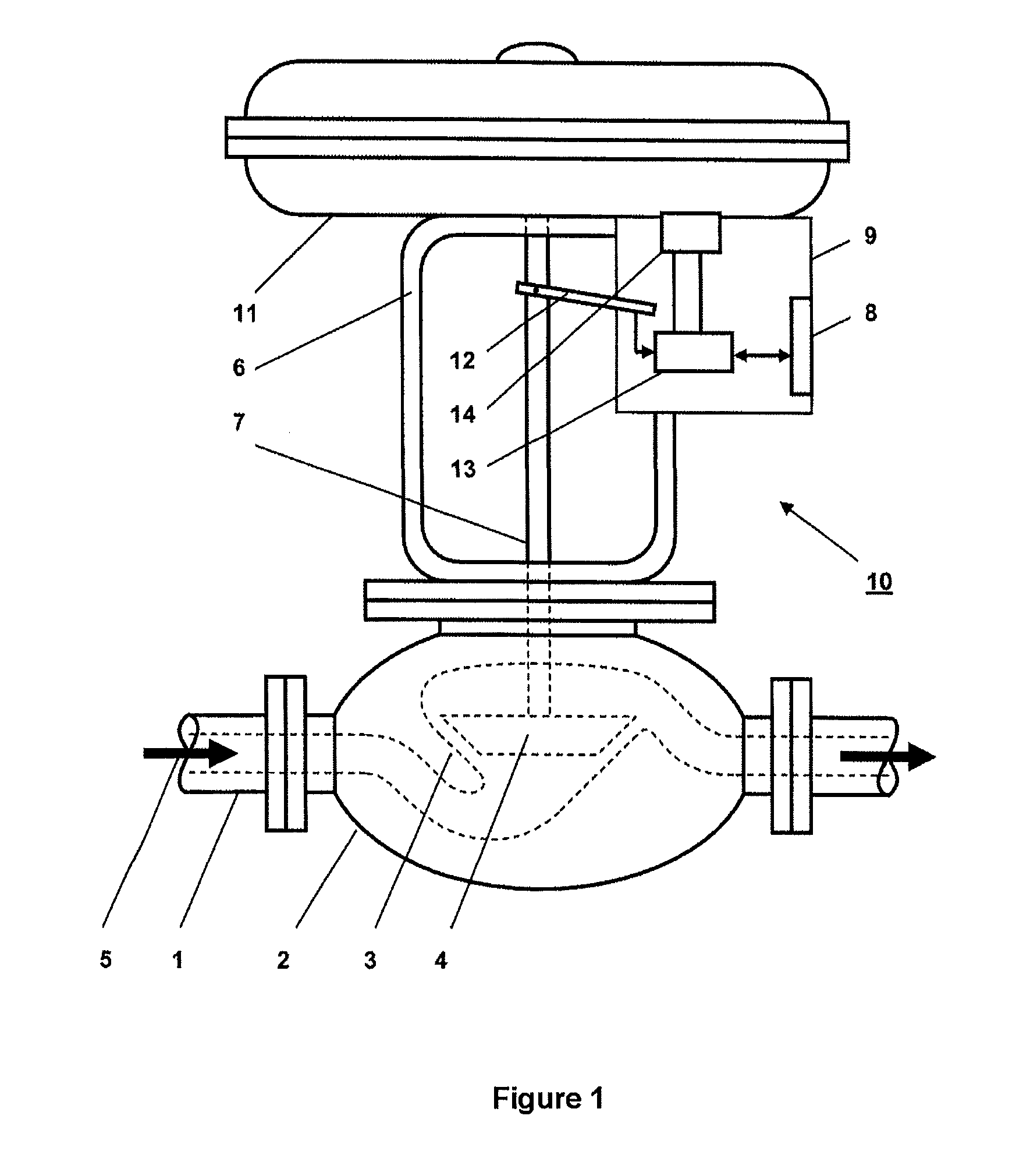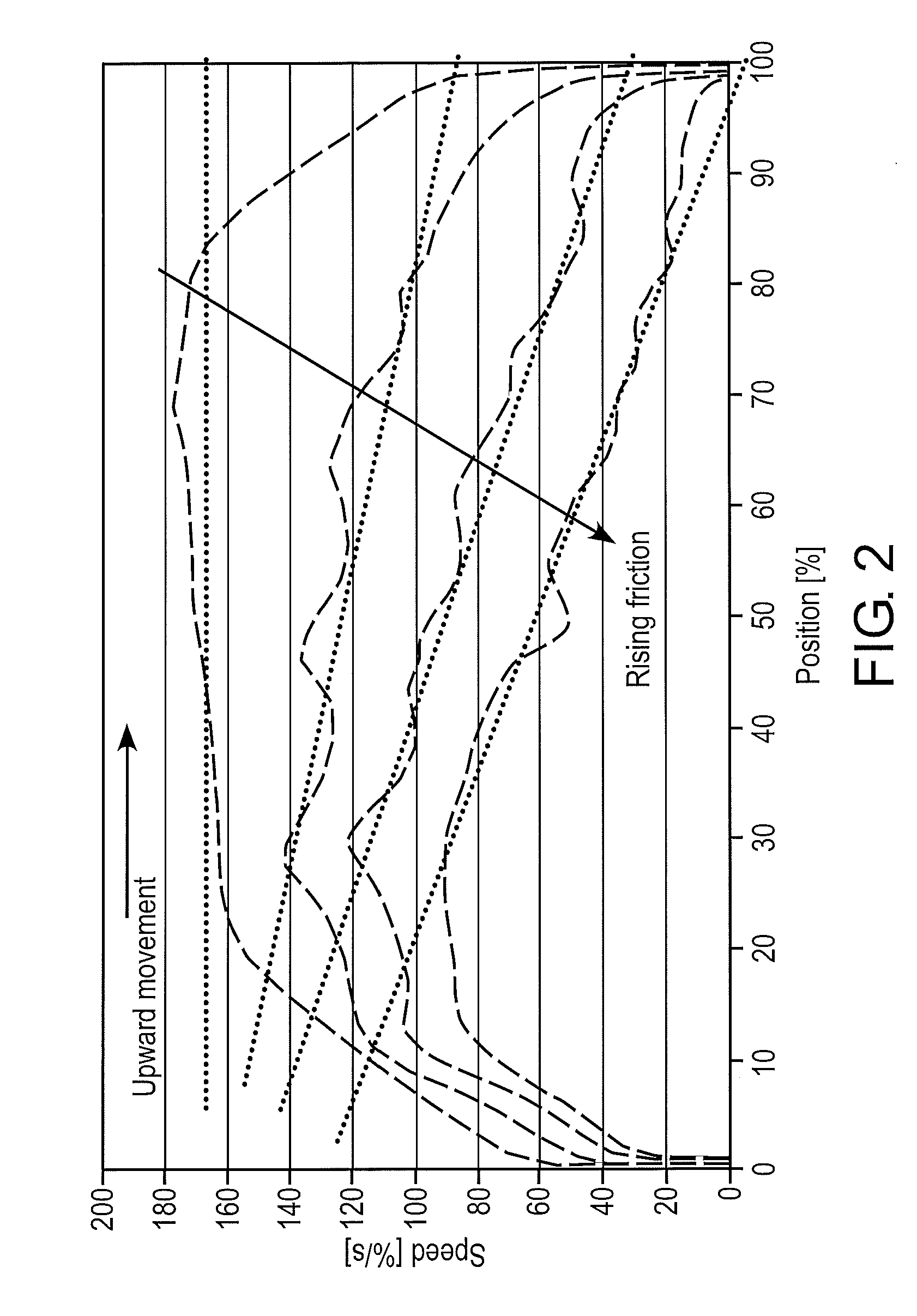[0024]An
advantage of the solution according to exemplary embodiments of the present disclosure is, for example, that the use of a pressure sensor within the valve can be entirely dispensed with for the purpose of determining the wear state. The exemplary method according to the present disclosure also provides the preconditions for, in addition to changes in the friction values in the valve mechanism, changes in respect of the spring constant and the parameters of the I / P converter to be determined separately and to be supplied to a diagnosis system. Furthermore, the solution according to the exemplary method of the present disclosure is suitable, for example, for monostable valves in which the valve element is operated from one side by
pilot control, whereas the starting position is assumed by a resetting spring. In contrast, for bistable valves with
pilot control at both sides, it is more difficult to draw conclusions about the wear state by means of the creation of change profiles of the speed of the switching element since ventilation and venting of the two control chambers which are situated opposite the switching element takes place at the same time.
[0025]Often, only the pressure in one of the control chambers changes as function of the I / P converter and the other control chamber remains at a
constant pressure. However, if the behavior of the I / P converter is known, the solution according to the disclosure can by all means be used for bistable valves.
[0026]An exemplary and advantageous measure of the present disclosure provides that a plurality of positions, both along the ventilation distance and along the venting distance, are included in the evaluation in order to determine the speeds prevailing there. Based on the different pressure situations at the I / P converter, the behavior of the
compressed air flow to and from actuators connected to the valve, and therefore the movement speed of the valve element, is different during the ventilating and venting
stroke. When a monostable valve is vented, a relationship is produced between the venting flow rate and the reduced force of the resetting spring such that the speed depends solely on the actual opening of the UP converter, and therefore the speed is constant. During ventilating, however, the flow rate is constant and the speed of the switching element reduces as the switching
stroke rises. The exact link between the reduction in speed and the position is determined by the relationship between the
spring force of the resetting spring and the friction. By a plurality of speed determination operations of the switching element during the ventilating stroke and subsequent determination of the change profile, a change in the
spring force and other parameters of the pneumatic system can be determined. If, in addition, the speed of the switching element is determined during the venting stroke, a more exact analysis values for the pneumatic system can be obtained.
[0027]A further exemplary and advantageous measure of the present disclosure proposes storing the change profile of the speed profile over the switching stroke, together with the date of the measurement, in a memory element. Corresponding
data records form a
database which the evaluation unit can in turn access in order to create a wear state forecast from the history of stored change profiles by comparison. In the simplest case, this can be done by extrapolation. If a first determination of the change profile is created and stored when the valve is activated, a change in the friction behavior can already be identified with an actual change profile which is determined at a different time from this for the purpose of wear state identification.
[0029]An exemplary method according to the present disclosure for determining the wear state of the valve mechanism of a monostable
pneumatic valve, which can be switched by means of an UP converter, can be implemented by the integration of a
position sensor system for determining the time at which various positions of the switching element along the ventilating or venting distance are reached. A downstream evaluation unit evaluates the measured switching times measured as a result by mathematically calculating the speed of the valve element prevailing at the various positions from said switching times. A stored data
record including the respective value pair positions with the associated speed, which data
record represents the speed profile of the valve mechanism, is created from this. The comparison of two speed profiles, which have been created at different times from one another after many valve switching cycles, can be used to determine a change profile by calculating the difference, where the change profile is used as a measure of the wear state of the valve mechanism. If the change profile shows a significant reduction in the speeds at a plurality of positions of the switching stroke, this indicates, for example, progressive wear of the valve mechanism. It goes without saying that the other parameters which influence the measurement have to be constant.
[0030]The
position sensor system which is provided for the purpose of determining the switching points can be formed from a plurality of integrated binary proximity switches which are spaced apart from one another in the valve housing. If an inductive measurement principle is used for this purpose, each of the proximity switches interacts with a permanent
magnet which is integrated in the valve element, and the proximity switch, which is inductive in this respect, outputs a binary
signal when the maximum value of the
voltage which is induced by the movement of the valve element is reached. As an alternative to this, it is also feasible to form the position
sensor system as an analog travel measurement sensor which is integrated in the valve housing along the switching distance. A travel measurement sensor of this kind can, for example, be in the form a kind of slide
resistor with which any desired position of the valve element along the switching distance can be established. However, a travel measurement sensor which operates in a contact-free manner should preferably be used in order to prevent friction-related wear on the sensor.
 Login to View More
Login to View More  Login to View More
Login to View More 


